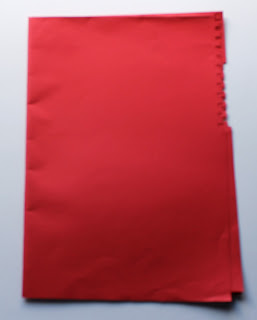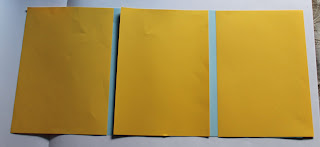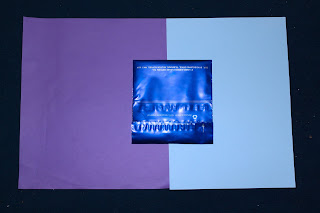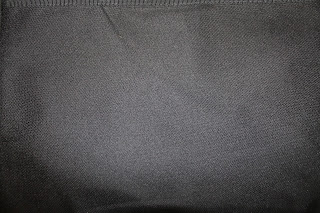Based on the colour theory sessions that we have been having, we need to present our understanding of the theories by carrying out 10 colour experiments based on these ideals, such as Itten's 7 Colour Contrasts. For each experiment, we need to present 10 photographs to record how successful the experiment was and evaluate each point.
1. Contrast of Tone
Are there any tonal colours that don't have an equal contrast?
 |
| Black/White Colour Wheel Tones |
 |
| Colours from the Colour Wheel |
In order to get an even amount of information, I decided to try this with both Black and White and the Colour Colour Wheel.
 |
| Black and White Tonal Colour Combinations |
I think the Black and White Tones do have a equal contrast throughout as they are very similar in regards to the fact that they are similar in shades and tints as to the Black and White themselves. The only one that doesn't seem to have an equal contrast is Black and White itself as they are very powerful and vying for the attention between themselves.
 |
| Colour Tones from the Colour Wheel |
These tonal values from the colour wheel suggest that they are not very compatible however they do seem to have an equal tonal contrast.
Overall, based on the photographs I have taken, I think that the colour tones that I have looked at are all equal in contrast due to the spacial quality that they share on the colour wheel.
2. Contrast of Hue
Which choices of hue combination positively and negatively effect the legibility of text?
 |
| Same Hue on Hue |
Using colours that are the same on top of each other effects the readability of the text due to the fact that it blends into the background. There is no contrast in the hue from this therefore it effects the legibility.
 |
| Contrasting Colours |
The contrast between the hues allows for the letters to be legible in regards to their forms but the contrast between the hues means that they are difficult for the eye to read.
 |
| On Black and White |
On a white background, the darkest colour is most readable whereas on a black background, the lightest colour is the most legible.
 |
| Tonally Close |
These hues are tonally close together as they are next to each other on the colour wheel. This means that the colour which joins them radiates them making them compliment each other and aid the legibility and readability of the text.
From the experiments, I've found that the most successful hue combinations in regards to legibility and readability are those that are either have a light neutral background and a dark hue or a dark natural background and a light hue.
3. Contrast of Saturation
Which effect causes the biggest chromatic change in a colour- when it is saturated or desaturated?
 |
| Different Coloured Cards |
I picked a selection of different coloured cards so I could see a range of variants as to how the colour is effected by saturation and de-saturation. I want to know
 |
| Saturate, Normal and Desaturate Green |
The chromatic value of the original hue is quite bright therefore the saturation of the colour only goes on to add to the chromatic value whereas the desaturation seems to take away from it.
 |
| Saturate, Normal and Desaturated Purple |
The purple chromatic value doesn't change dramatically through the saturation or desaturation of the colour thereby keeping the hue pretty much the same through the tones and allowing for an equal balance.
 |
| Saturate, Normal and Desaturated Red |
The chromatic value of the red is severely challenged by saturation of the hue as it is difficult to look at which makes it effect the chromatic appearance of the colour.
 |
| Saturate, Normal and Desaturate Yellow |
The yellow chromatic colour is taken away in the desaturation of the colour as it is quite murky and discolour whereas the saturation of the colour adds to the chromatic value of the original colour.
 |
| Saturate, Normal and Desaturate Orange |
The chromatic values of the range are quite steady in its tonal range and values when becoming saturated and desaturated. The original colour is closer to the saturated colour, however, it doesn't seem to devalued by the desaturation of the colour either.
 |
| Saturate, Normal and Desaturate Blue |
The blue chromatic value doesn't change dramatically through the saturation or desaturation of the colour thereby keeping the hue pretty much the same through the tones and allowing for an equal balance.
 |
| Saturate, Normal and Desaturate Pink |
The biggest change to the pink chromatic value of the colour is the saturation of the pink as the original colour was quite pale and murky so it was closer to the desaturated.
From the experiments, I've noticed that the original colour effects whether the chromatic value changes. If the original colour is naturally darker than it will be more effected by saturation whereas if the colour is naturally brighter then it will be closer to the saturation and more effected by desaturation.
Overall, I think the desaturation of a colour causes the biggest chromatic change as the darkness that has been added dulls the colour so it takes away from the pigments that were already there.
4. Contrast of Exstension
Can there be a proportional balance between the lightest and heaviest colours on the colour wheel?
 |
| Blue and Yellow |
The heaviest colour on the colour wheel is blue and the lightest colour on the colour wheel is yellow. Is it possible for there to be a proportional amount of each colour so that there is equal weighting?
 |
| Variations of Proportions |
I felt that from my experiments that the most successful of these proportions was those which had a either an equal amount of colour showing or those which had slightly more yellow showing so that there is more of a balance between the amount of lighter and darker colour showing.
5. Contrast of Temperature
How can you make cool colours look warm and warm colours look cool?
 |
| Cool Colours on a Warm Background |
By using a warm colour to surround the cool colour, it will take out elements from the colours which are similar and heighten them. For example, the green and yellow have the colour yellow in common so the yellow brings out the yellow in the green making it appear warmer. Another example is the red and purple have red in common so the red brings out the red in the purple therefore making it appear warmer.
 |
| Warm Colours on a Cool Backgrounds |
By using a cool background to surround the warm colour, it will take out elements from the colours that are similar and heighten them. For example, the blue background brings out the blue in the red therefore it makes it appear colder.
Overall, my experiment showed that you can make cold colours and warm colours appear the opposite by using optics to give the appearance of the colour changing.
6. Complementary Contrast
Which colour relationships on the colour wheel have the biggest contrast?
 |
| Card representing the Colour Wheel |
Using colours from the colour wheel, I decided to investigate which relationships work the best and which have the biggest contrast.
 |
| Monochromatic |
Monochromatic colour schemes don't have a huge contrast because they are based around the same hue but having a different shade or tint so they compliment each other subtly rather than contrast.
 |
| Complimentary Colours |
Complimentary colours are the furthest away from each other on the colour wheel therefore they fight for the attention of the eye creating a great contrast.
 |
| Cold/Warm Colours |
This set of colours work well together as they are of similar temperatures therefore they do not create a great contrast.
 |
| Analogous Relationship Colours |
Analogous colours are next to each other on the colour wheel so they share a similar colour tonally. This means that they do not have a strong contrast between the colours as they share this connection.
 |
| Triads Colour |
Triads have a strong contrast as they are 3 colours which are equally spaced apart by the colour wheel.
 |
| Split Complimentary |
Split complementary colours produce a contrast hut not as much of a strong contrast due to the fact that the colours are not directly opposite each other.
 |
| Rectangle Relationship |
The rectangle produces 2 sets of colours which are close to each other which puts some contrast and some complimentary colours together. This does create a contrast but not as strong as a normal complimentary colour pairing.
 |
| Square Colours |
The square relationship produces 4 colours which are evenly spaced out which creates a contrast between the 4 colour choices.
The relationships with the strongest contrast from my experiment is the ones where the colours are spaced out away from each other n the colour wheel, with the strongest of these being the complimentary colours.
7. Simultaneous Contrast
Which colours cause the greatest amount of discord?
 |
| Discord Colour Experiments |
What I have noticed from the colours I have put together is that when 2 similar colours are put next to each other, they create the greatest amount of discord alongside when 2 strong contrasting colours are put together. In particular the ones that are lightest as they cause the colours to merge as they are quite similar in regards to the shades therefore becoming illegible.
From the 7 Rules, I am going to choose 3 areas of colour theory that I can investigate to continue my investigations with.
8. Tonal Shifts
Do colours produce optical changes when put next to each other?
 |
| Blue on Blue |
When put next to each other, the different tones and shades of the blues used highlight the shift in shades. The lighter backgrounds are made bluer by the object yet the darker background appears lighter with the object.
 |
| Blue on Purple |
When put on a purple background, the blue appears slightly redder in shade. This is due to the fact that it is closer to the red on the colour wheel thereby creating the optical shift in the tonal colour. This darkens and dulls the luminosity of the blue colour becoming even colder in temperature.
 |
| Blue on Green |
When put with a green background, the blue comes across slightly brighter and luminous with a warmer temperature compared to that of the purple. This shift in tone produces a different presentation of the blue to the eye.
 |
| Combinations of Analogous Hues |
As shown by the variations in the colour choices, the different hues next to each other alongside the different shades of various colours highlight the changes that are presented when different colours are put next to each other. They seem to highlight an aspect of the colours make up and putting emphasis onto it.
Overall, colours do produce tonal shifts when they are next to each other, either darkening, lightening or changing the hue of the colours itself and presenting a different optical view of the colour.
9. Natural Light vs Artificial Light
Which is the best light to use when viewing the colour of an object- Natural or Artificial?
 |
| Natural and Artificial Light Sources |
Using a natural light source (a windowsill) and an artificial light source (a desk lamp) in order to see which is the most successful at viewing a colour. I will take the photographs at the same time in order to see any differences in light in a fair way.
 |
| Natural Light Experiment |
From the evidencing photographs, you can tell that the colour changes due to the change in the natural light source. This makes the coloured card appear darker and seems to loose its colour.
 |
| Artificial Light Experiment |
As evidenced by the photographs, using the artificial light makes the colour stay the same throughout therefore not changing the quality of the colour.
Therefore, based on the experiment, artificial light is the best light to view colour in.
10. Neutral Colours
Is there a difference in the luminosity of colour based on whether it is on a dark neutral background or pale neutral background?
 |
| Black and White Backgrounds |
 |
| Beige and Grey Backgrounds |
Using a Black, White, Beige and Grey background, I will be able to determine through the different lights and darks as to whether the backgrounds effect the luminosities of the colours.
 |
| Black Background with Coloured Card |
The colours seem much brighter when put against a black background albeit a bit faded in regards to the blue.
 |
| White Background with Coloured Card |
The white background doesn't seem to effect the colouration of the card therefore causing no difference to the presentation and luminosity of the colour.
 |
| Dark Neutral Background with Coloured Card |
The grey background causes less luminosity of the colour and manages to keep the subtlety of the card. This means that the colour looks like it is suppose to.
 |
| Pale Neutral Background with Coloured Card |
The beige background also doesn't seem to effect the colours either, meaning that they fulfil the shade that they are to present.
From the evidence of the experiment, the darker neutral backgrounds caused a sharper luminosity to the colours therefore changing the tone whereas the lighter neutrals seem to not effect the colours and kept the hues as they were.
Therefore, darker neutrals are more likely to effect the luminosity rather than lighter neutrals.
















































































































































No comments:
Post a Comment